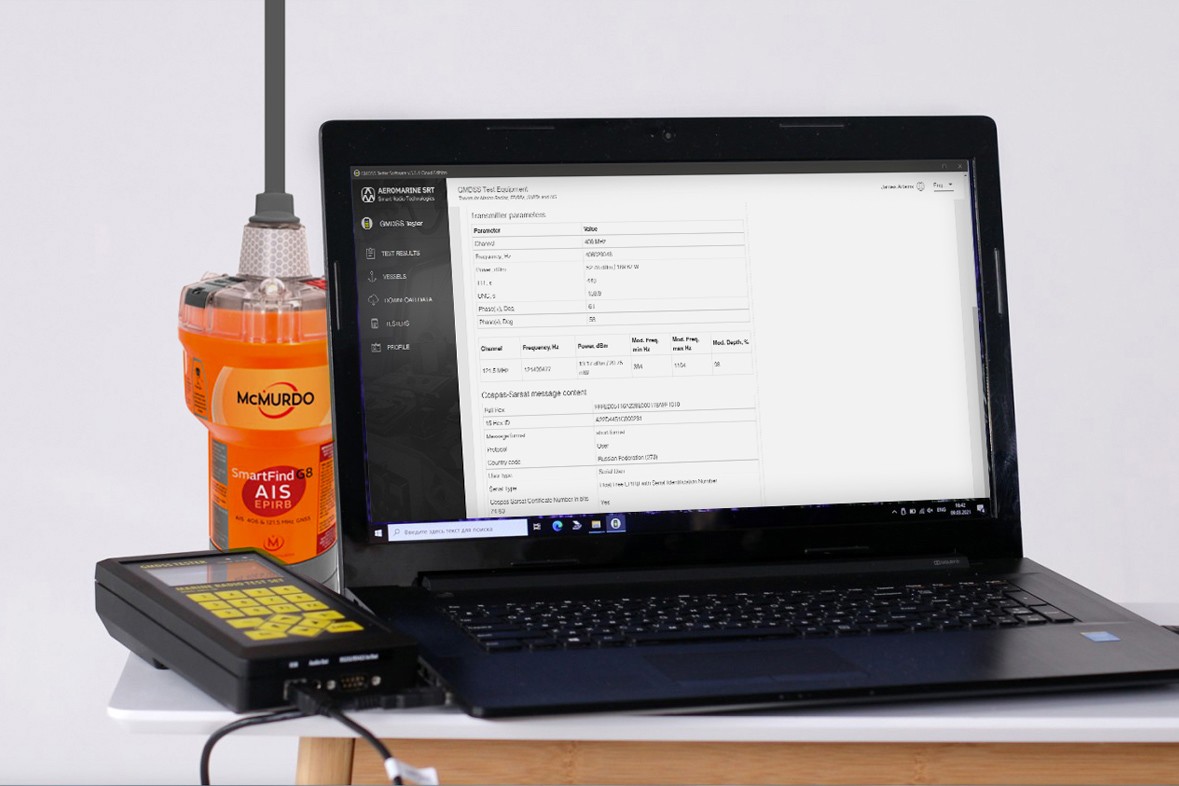GMDSS Radio Survey Reports: how will they change in 2022?
The Global Maritime Distress and Safety System (GMDSS), as it is known, has been undergoing a large-scale modernization in the last decade. Its revision is already coming to an end.
Enormous work has been done to ensure that this system, which is responsible for ensuring the safety of life at sea, meets the changing realities. Modern communication technologies were implemented into the system, while the requirements for obsolete ones were removed and the relevant terminology was updated.
All these processes are of direct relevance to the field of GMDSS radio surveys. Dozens of regulations and requirements have been revised due to the introduction of new types of equipment and terms describing them.

So, what changes are expected to be implemented in the procedures for conducting radio surveys in 2022?
A significant part of changes are related to the circulars regulating the testing and maintenance of EPIRBs, updated on October 18, 2021. The content of GMDSS radio survey reports should be brought into line with:
-
MSC.1/Circ.1040/Rev.2 circular on “Guidelines on annual testing of Emergency Position-Indicating Radio Beacons (EPIRBs)”;
-
MSC.1/Circ.1039/Rev.1 circular on “Guidelines for shore-based maintenance of Emergency Position-Indicating Radio Beacons (EPIRBs)”.
These circulars represent the enlarged SOLAS requirements for the EPIRBs. The new rules set out in Annex 24 of IMO’s MSC 101/24/Add.1 will enter into force on July 1, 2022. Since then, every EPIRB installed on a ship must have the internal AIS frequency (AIS locating signal) along with the 406 MHz channel and the GNSS receiver.
Circular on “Guidelines on annual testing of Emergency Position-Indicating Radio Beacons (EPIRBs)”, main amendments:
-
One group of updates is associated with the introduction of second generation beacons. Hereafter, there are first generation beacons (FGBs) compliant with document C/S T.001, and second generation beacons (SGBs) compliant with document C/S T.018; 15 Hex ID is used for FGBs, and 23 Hex ID – for SGBs.
-
Another part of changes is related to the use of a new type of beacon - EPIRB AIS. Such a device should be tested for emission on the appropriate AIS frequencies - an AIS receiver is required for this.
-
Performing the beacon self-test procedure now includes GNSS self-test, if applicable. Previously, such a requirement concerned only the circular regulating the shore-based maintenance of satellite EPIRBs (1039).
-
Checking the pictorial instructions for manual operation that should be visible at the location of the EPIRB is required now.
Circular on “Guidelines for shore-based maintenance of Emergency Position-Indicating Radio Beacons (EPIRBs)”, what’s new:
-
EPIRBs designed in accordance with resolution MSC.471(101), installed on or after 1 July 2022, must comply with the Guidelines set out in the annex to MSC.1/Circ.1039/Rev.1. As for EPIRBs in compliance with resolution A.810(19), installed before 1 July 2022, they should fulfil the MSC/Circ.1039.
-
The content of the term "EPIRB" under MSC.471(101) has been expanded: now it refers to devices that include 121.5 MHz transmitters, GNSS receivers, and AIS locating signals. The guidelines under MSC.1/Circ.1039/Rev.1 no longer refer to L-band EPIRBs.
-
To check the transmission of the AIS locating signal, the SBM provider must have at its disposal such equipment as an AIS receiver.
-
If the EPIRB is equipped with the Return Link Service (RLS) function and is programmed using the RLS message protocol, testing should be carried out to verify its proper operation.
-
As for the external labelling of the equipment, the transmitted identification codes differ for EPIRBs of the first generation and EPIRBs of the second generation; the EPIRB AIS identity (User ID) will be described in the format 974XXYYYY.
* * *
All the above mentioned updates in IMO documents are to be included in the survey procedures carried out with respect to onboard GMDSS radio equipment. The test reports compiled based on the results of these inspections should be amended accordingly.
It is important to highlight that changes in radio survey procedures also take place at the level of national legislations of IMO member states. For example, in 2022, the Italian radio inspectors, in addition to the annual tests of EPIRBs, SARTs, AIS, will also perform tests on the power of transmitters, frequency deviations, modulation percentage, etc. on the VHF-MF/HF-NBDP transmitting devices, and on the portable GMDSS VHF devices. This will have an impact on the volume of reports, they will increase.
Due to the current pandemic situation, even more radio inspections will be carried out remotely. The requirements for procedures of on-site inspections and remote ones may vary.

Aeromarine SRT tracks the related changes in IMO instruments. In the coming months, the company developers will make the necessary edits to GMDSS Radio Survey Report templates for Aeromarine SRT GMDSS testers. After that, the reports will be created in accordance with the latest IMO requirements.
Starting February 2022, a new feature - EPIRB AIS testing - will be added to the scope of capabilities of our GMDSS Multi Tester MRTS-7M.
We invite you to subscribe to our LinkedIn page to be the first to know about our updates.
By Olga Davydova





Be the first to comment